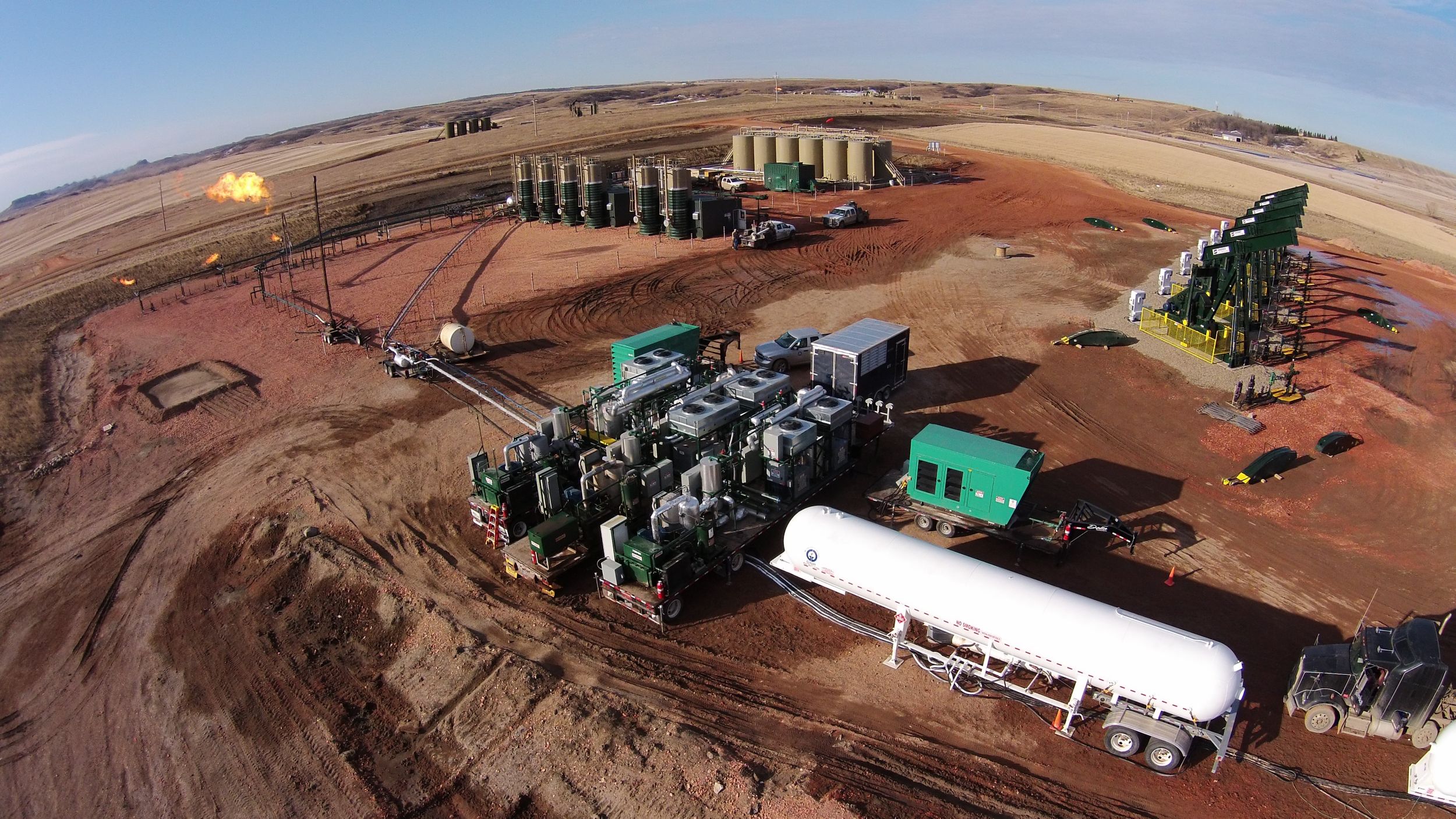The release of flared natural gas into the atmosphere is a global issue. It’s wasting natural resources, costing energy companies money and harming the environment. GTUIT, a manufacturer of mobile gas treatment systems in which Caterpillar is a minority shareholder, has a proven economic and environmental solution—one that’s already making a big difference in the Bakken oilfield.
The Problem: Wasteful Burning Squanders Gas & Money, Increases Emissions
Flare gas is a byproduct of the oil production process. In many locations, oil wells are hooked into pipelines, and the gas travels through those pipelines to facilities where it can be treated. In places like North Dakota and southern Saskatchewan’s Bakken oilfield, however, where infrastructure hasn’t caught up with the pace of production, the gas typically is “flared” into the atmosphere.
According to the North Dakota Industrial Commission, Department of Mineral Resources, almost 10%—nearly 5 billion cubic feet—of the natural gas produced in North Dakota in June 2016 was flared. Starting November 1, 2016, gas capture requirements in the state rose to 85% and will rise again to 90% in 2020. Production may be curtailed if oil and gas companies don’t meet these requirements.
The problem isn’t limited to the Bakken or to North America, either. In a January 2016 article, Scientific American reported that about 3.5% of the world’s natural gas supply is being wasted due to flaring. And that’s not the only issue. This amount of wasteful burning leads to the emission of around 350 million tons of carbon dioxide each year—equal to about 10% of the annual emissions of the EU member states.
The Solution: An Innovative System for Flare Gas Capture & Conditioning
In 2012, three engineers with decades of experience in the energy industry founded GTUIT with the goal of reducing natural gas flaring in North America and around the world. Caterpillar made an equity investment in the Billings, Montana-based company in 2015 to help bring these solutions to Cat customers.
GTUIT’s mobile, modular gas capture and natural gas extraction units are about the size of a semi-trailer and easily connect to an engine or generator set. They significantly decrease the volume of flared gas at the wellhead and reduce the volume of volatile organic compounds released into the atmosphere.
The units also remove valuable natural gas liquids (NGLs) and produce a dry, consistent, high-BTU gas. Energy companies can conserve and sell the NGLs on the market for later use, and they can use the conditioned gas as “free” fuel to power on-site gas or dual-fuel engines and generator sets.
The result? Both economic and environmental benefits. In addition to less wasted gas and fewer emissions, GTUIT’s solution provides energy companies with marketable products they can use to decrease operating costs and boost revenues.
The Result: At Work in the Bakken Oilfield
Hess Corporation has been partnering with GTUIT since 2013 for well site NGL recovery and gas processing in the Bakken oilfield. Fifteen mobile and modular units recover NGLs, which are then trucked to market. In 2015, these units helped Hess recover an estimated 8.2 million gallons of NGLs, prevent about 16,000 tons of volatile organic compounds from being flared and keep nearly 52,000 tons of carbon dioxide from entering the atmosphere.
In September 2015, the World Bank Global Gas Flaring Reduction Partnership recognized Hess and GTUIT’s efforts with an award of excellence for the “development of innovative technology enabling a gas flaring reduction project.” The two companies continue to work together to meet Hess’s 2020 targets to reduce flaring intensity by 50% and greenhouse gas intensity by 25% from 2014 numbers.

